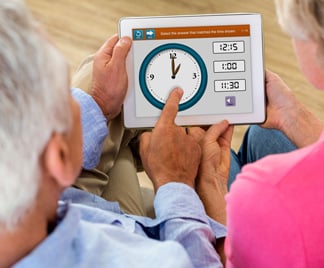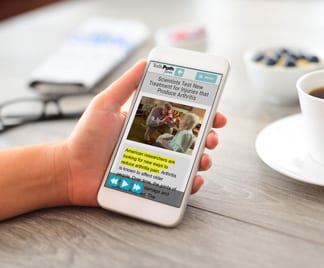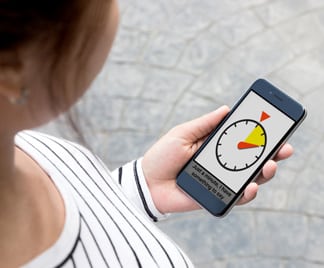If you’re a clinician working with a patient with apraxia, it can be difficult to know where to start. If you’re not sure, try one of these three evidence-based therapy techniques and associated tips.
Total Communication: Use a total communication approach to facilitate functional communication for your client, while targeting articulation of speech skills. This may include:
- No-tech communication tools: gesturing and pointing
- Low-tech (augmentative) communication tools: pen and paper, a whiteboard or pictures
- High-tech (augmentative) communication tools: text-to-speech apps, communication apps, Lingraphica SmallTalk apps, and Lingraphica AAC devices. Lingraphica AAC devices are specially customized to meet the client’s individual communication needs.
Articulatory-Kinematic: Use a multi-modality approach to practice articulation of speech skills. This may include:
- Articulatory placement cues, e.g., tongue tip up to the alveolar ridge to produce /t, d. n, l/. The description, combined with both visual and auditory cues, like the ones provided in the SmallTalk video apps for oral-motor exercises and phonemes, can be helpful.
- Visual and auditory feedback from modeling in front of a mirror, or video recording and then watching and listening to productions may also assist in improving articulation precision.
- Tactile-kinesthetic cues, like the ones used in the PROMPT method; utilize touch to manually guide the client through a targeted word, phrase or sentence
Rate Control and Timing Approaches: Incorporate rhythm into speech to help with articulation skills. This may include:
- Finger tapping or finger counting while speaking may help the speaker to slow down, relax and break the word or sentence into smaller, easier-to-produce sections.
- Singing or choral reading techniques may make it easier for the speaker to complete a sentence or produce a phrase.
- Metronomic pacing, or computer pacing, like the “Oral Reading for Language in Aphasia with Virtual Therapist” (ORLA) program, may also provide pacing cues that help the speaker improve articulation skills.
Use these tips and remember to have fun and focus on communication targets that are meaningful to your client! For more information about Lingraphica apps and devices that might help your patient with apraxia, please contact us.
Related Links
- Six Tips for Providing Speech Teletherapy
- Aphasia Treatment and Care Partners
- 10 Principles of Aphasia and Neuroplasticity
- What is Video Assisted Speech Technology (VAST™)?
- Transitioning to Speech Teletherapy
- AAC Device Goal Setting
- 5 Strategies for Incorporating AAC Into Your Practice
- 3 Things to Consider When Choosing AAC Devices
- 8 Ways to Use the News In Therapy
- Using AAC to Talk About Interests
- 3 Therapy Techniques for Targeting Apraxia
- 4 Benefits of Incorporating Whiteboards in Therapy
Free Aphasia Communication, Therapy, and Video Apps
TalkPath Therapy
Exercises designed for practicing and rebuilding speech and language skills.
TalkPath News
An online news source designed to engage and test language comprehension.
SmallTalk
Icon and video-based apps that help you communicate in everyday situations.




